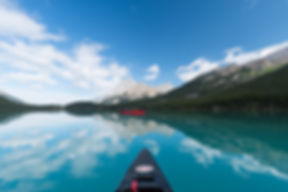How to photograph the Northern lights
- Nevin Xavier
- Feb 25, 2019
- 3 min read
Northern lights or the aurora borealis is a natural phenomenon caused by the interaction of charged particles from the sun in the atmosphere, which leads to this spectacular show of green and pink lights in the sky during winter time in the northern hemisphere closer to the artic circle.
I came to know about it while watching a documentary on BBC a few years back. I knew I had to photograph the northern lights when I got a chance.
After one failed attempt to photograph the aurora during peak winter in Iceland, I knew I had to go back.

Photographing the northern lights is similar to photographing the stars as we are dealing with night photography. Let’s start with the equipments we need to photograph the aurora.
Equipments
A DSLR/Mirrorless camera that can shoot in manual mode.
A wide angle lens with a fast aperture of min f2.8.
A sturdy tripod.
Locations
The Northern lights are usually found in the northern hemisphere around the artic circle. If you live in Europe one of the best places to see the lights is Lapland and Iceland during winter time.
One of my favourite place is Iceland, as we get to shoot the lights with all these iconic waterfalls and glaciers Iceland has to offer.

If you happened to live in North America, Northern Canada is supposed to be good to witness this spectacle. Back in 2015 when I visited Banff National Park in Alberta Canada, I did manage to see a glimpse of the aurora during a September Night.
Camera settings
Manual mode
Aperture f2.8 or higher like f2 or f1.4
Shutter speed 5-20 seconds
ISO 1600-6400
Image format RAW ( For maximum flexibility when editing)
White balance 3800 Kelvin
Put the camera on self timer to avoid any camera shake while pressing the shutter button.
Time of the year
Aurora borealis are visible by September near the artics until April. There is a common misconception that it’s visible every night during winter. This often leads to disappointment, as people tend to book short trips to the artics hoping to catch a glimpse of the lights, unless they are super lucky and it happens to be during a solar storm, it’s highly unlikely to see the northern lights as it doesn’t happen often.
The intensity of the aurora is measured in kp index, which is a unit measuring the geomagnetic activity.
Only one thing to keep in mind , the higher the kp index the higher the aurora activity, therefore higher the chances of seeing the aurora.

Even though photographing the aurora is similar to photographing the stars, the only key difference is since the aurora is a bright light mostly green, we can get away with shorter exposure times( usually between 5-10 seconds) , this is applicable only if there is a good amount of aurora activity. If not it’s good to use the full 30 seconds exposures to make the aurora bit more brighter and you can use this method to fill the sky with the light. In the image below , I used a 30 second exposure as the aurora activity was very low and the light was not bright enough.

So there you have it guys, everything you need to know about photographing the Aurora. I know it’s a bucket list item for a lot of people. Now just book your flight and make it happen. Even if you are planning to photograph or not, the joy of seeing the light dance with your friends will be one of the best experiences you will ever have, trust me.

Thanks for your time, if you enjoyed the blog, please do share it with your friends. Hopefully it will inspire others to get out there and see this spectacle of Mother Nature.
Thank you
Nevin Xavier
instagram@nevinixavier















